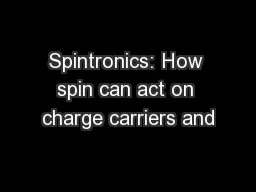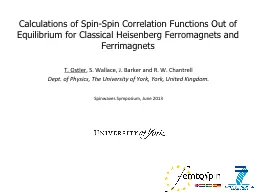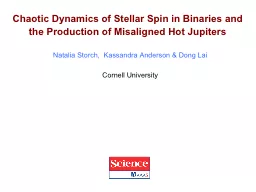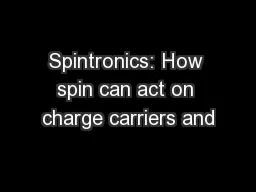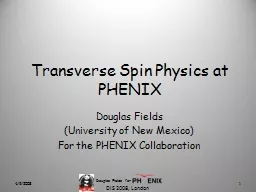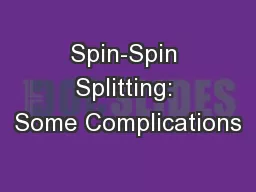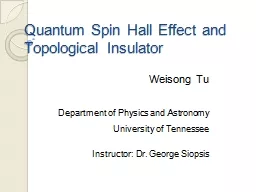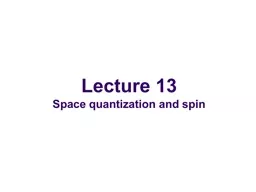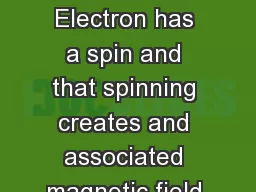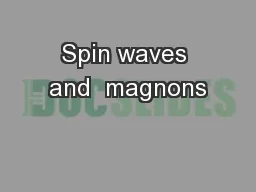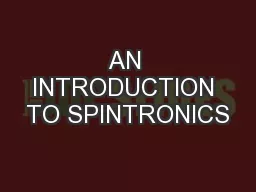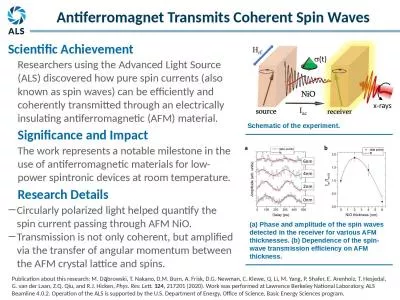PPT-Spintronics: How spin can act on charge carriers and
Author : marina-yarberry | Published Date : 2017-06-18
vice versa Tom as Jungwirth University of Nottingham Institute of Physics Prague Mott nonrelativistic twospinchannel model of ferromagnets Dirac relativistic
Presentation Embed Code
Download Presentation
Download Presentation The PPT/PDF document "Spintronics: How spin can act on charge ..." is the property of its rightful owner. Permission is granted to download and print the materials on this website for personal, non-commercial use only, and to display it on your personal computer provided you do not modify the materials and that you retain all copyright notices contained in the materials. By downloading content from our website, you accept the terms of this agreement.
Spintronics: How spin can act on charge carriers and: Transcript
Download Rules Of Document
"Spintronics: How spin can act on charge carriers and"The content belongs to its owner. You may download and print it for personal use, without modification, and keep all copyright notices. By downloading, you agree to these terms.
Related Documents

